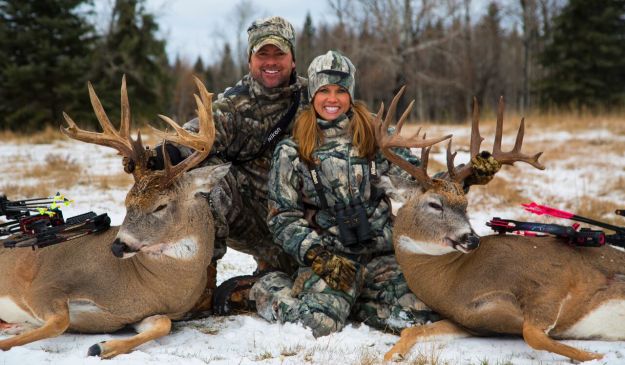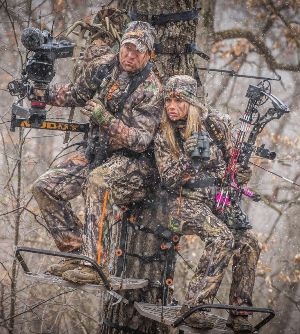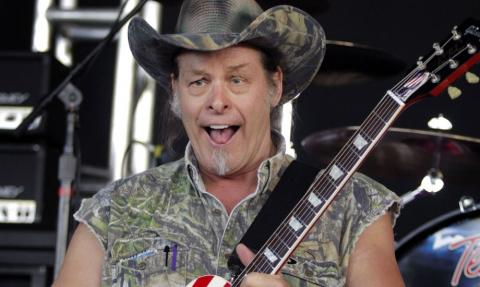
Since Minnesota’s deer often bed close to their food sources, having somewhere to put up a tree stand in between their food sources and their bedding areas will be almost impossible. To solve this problem, we’ll usually get one of our friends to drive us along the field’s edge, so that the vehicle spooks the deer. Due to the deer bedding near the agricultural fields where we hunt, they see trucks and tractors regularly and aren’t as sensitive to being spooked by a vehicle as they are from hearing a hunter approach. I try to get into my stand and sit quietly before the truck or the tractor that I go in leaves. The deer are so accustomed to these noises that they know when the truck or tractor leaves a field that the danger is gone too. The deer may wait 30 minutes to an hour before returning to the field, but they won’t leave the country like they will if they see, smell or hear the hunter.
One reason we use muddy tree stands and muddy climbing sticks, especially for late-season hunting, is because then they’ll be very quiet. The noise of a vehicle also tends to hide any sound or movement that we may make. I’ll ask the person who is driving the vehicle to please wait until I am in my tree stand, have screwed my bow hanger in, have gotten my bow hung and given him the okay sign before he leaves the field. In the buck’s mind, he thinks danger has come into the field, and then he hears danger leave the field. Just as importantly as using a vehicle to spook the deer if they’re bedding close to an agricultural field when you go into hunt is to leave the field in the same way.
 If I don’t shoot a buck while in my stand, then when I get ready to come out of my stand, more than likely there will be deer in the field. I don’t want the deer to see, hear or smell me coming out of my stand when the hunt’s over. To solve this problem, I’ll have the person who took me to my stand come and pick me up after dark. Then once again the vehicle spooks the deer, instead of me. I’ve learned that once the deer see you in the stand, they don’t forget what they’ve seen.
If I don’t shoot a buck while in my stand, then when I get ready to come out of my stand, more than likely there will be deer in the field. I don’t want the deer to see, hear or smell me coming out of my stand when the hunt’s over. To solve this problem, I’ll have the person who took me to my stand come and pick me up after dark. Then once again the vehicle spooks the deer, instead of me. I’ve learned that once the deer see you in the stand, they don’t forget what they’ve seen.
If I don’t have someone to pick me up at dark, and I’m still in the stand, I’ll bark like a dog as loudly as I can. Or, I’ll bark like a coyote chasing a deer. If you’ve ever heard a dog chasing a deer, you know their barks are very fast and excited and almost tend to run together. If you bark or howl once or twice, the deer will step just off the field and look to see from where the sound’s coming. But if you bark fast and loudly – like a dog that’s right on a deer’s heels – the deer will run away from the field, which gives me time to climb down from my tree stand and get out of the field, before the deer even thinks about returning to the field.
I’ve also learned that any time the air temperature is less than 20 degrees, the deer always seem to move more than if the temperature is above 20 degrees, which is another reason I enjoy hunting in the late deer season. The colder the weather is, the earlier in the day the deer will come out of their beds and move toward food. So, if you take your buck during the early season, you may be missing an opportunity to take a bigger buck in the late season, when the weather’s colder, and the deer are moving more.
Day 4: The Importance of Noticing Small Things in the Late Season to Be Successful






























